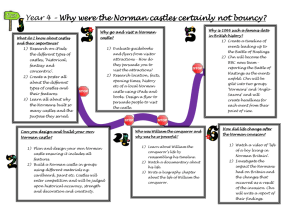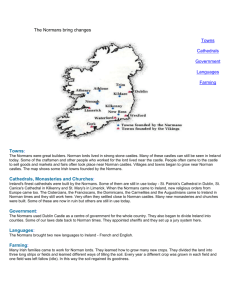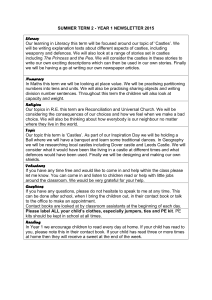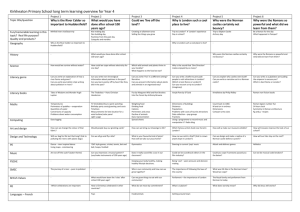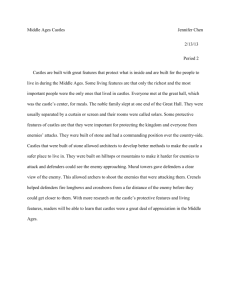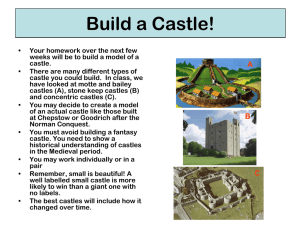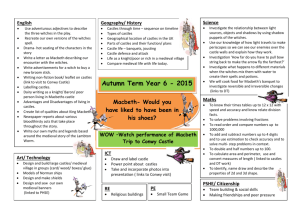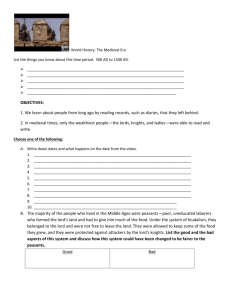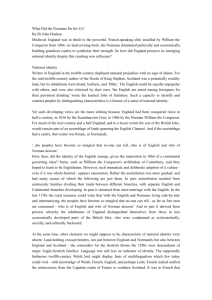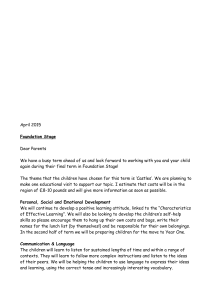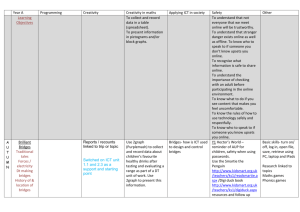Norman control of England 1066
advertisement
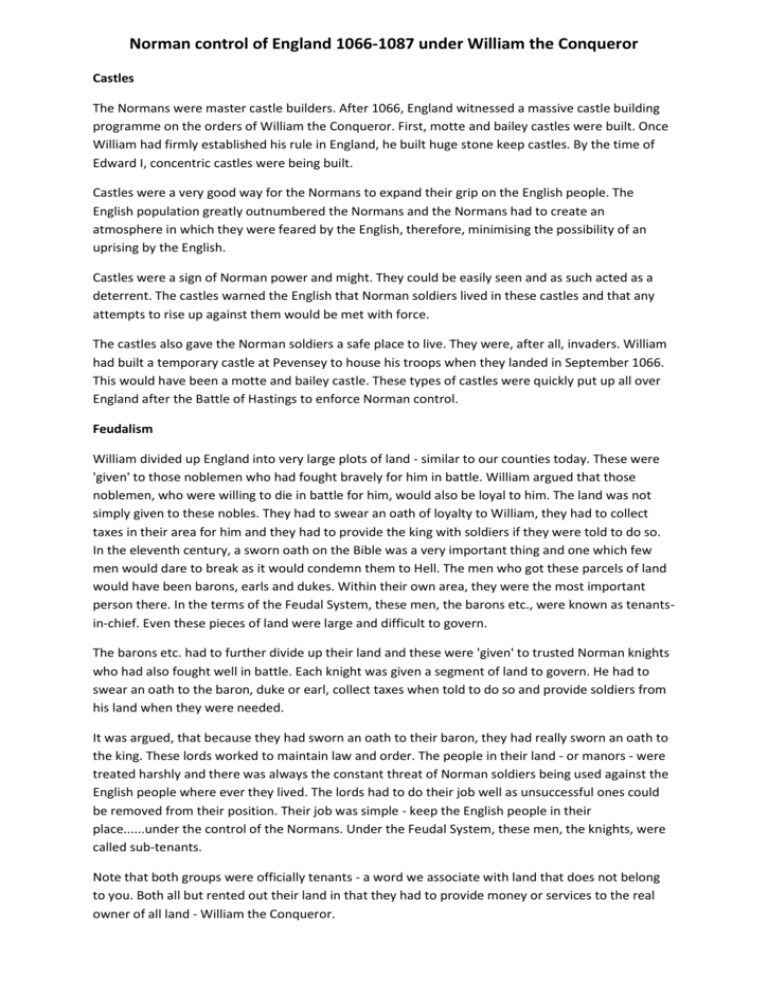
Norman control of England 1066-1087 under William the Conqueror Castles The Normans were master castle builders. After 1066, England witnessed a massive castle building programme on the orders of William the Conqueror. First, motte and bailey castles were built. Once William had firmly established his rule in England, he built huge stone keep castles. By the time of Edward I, concentric castles were being built. Castles were a very good way for the Normans to expand their grip on the English people. The English population greatly outnumbered the Normans and the Normans had to create an atmosphere in which they were feared by the English, therefore, minimising the possibility of an uprising by the English. Castles were a sign of Norman power and might. They could be easily seen and as such acted as a deterrent. The castles warned the English that Norman soldiers lived in these castles and that any attempts to rise up against them would be met with force. The castles also gave the Norman soldiers a safe place to live. They were, after all, invaders. William had built a temporary castle at Pevensey to house his troops when they landed in September 1066. This would have been a motte and bailey castle. These types of castles were quickly put up all over England after the Battle of Hastings to enforce Norman control. Feudalism William divided up England into very large plots of land - similar to our counties today. These were 'given' to those noblemen who had fought bravely for him in battle. William argued that those noblemen, who were willing to die in battle for him, would also be loyal to him. The land was not simply given to these nobles. They had to swear an oath of loyalty to William, they had to collect taxes in their area for him and they had to provide the king with soldiers if they were told to do so. In the eleventh century, a sworn oath on the Bible was a very important thing and one which few men would dare to break as it would condemn them to Hell. The men who got these parcels of land would have been barons, earls and dukes. Within their own area, they were the most important person there. In the terms of the Feudal System, these men, the barons etc., were known as tenantsin-chief. Even these pieces of land were large and difficult to govern. The barons etc. had to further divide up their land and these were 'given' to trusted Norman knights who had also fought well in battle. Each knight was given a segment of land to govern. He had to swear an oath to the baron, duke or earl, collect taxes when told to do so and provide soldiers from his land when they were needed. It was argued, that because they had sworn an oath to their baron, they had really sworn an oath to the king. These lords worked to maintain law and order. The people in their land - or manors - were treated harshly and there was always the constant threat of Norman soldiers being used against the English people where ever they lived. The lords had to do their job well as unsuccessful ones could be removed from their position. Their job was simple - keep the English people in their place......under the control of the Normans. Under the Feudal System, these men, the knights, were called sub-tenants. Note that both groups were officially tenants - a word we associate with land that does not belong to you. Both all but rented out their land in that they had to provide money or services to the real owner of all land - William the Conqueror. Domesday Book To further extend his grip on England, William I ordered that a book be made containing information on who owned what throughout the country. This book would also tell him who owed him what in tax and because the information was on record, nobody could dispute or argue against a tax demand. This is why the book brought doom and gloom to the people of England - hence "Domesday Book". The decision of what someone owed was final - rather like Judgement Day when your soul was judged for Heaven or Hell. William ordered the survey of England to take place about twenty years after the Battle of Hastings. The Saxon Chronicle states that it took place in 1085, while other sources state that it was done in 1086. The whole survey took less than a year to complete and the books can be found in the Public Records Office. Everybody had to pay their tax to the king. This meant that no lord or other nobleman could build up enough money to raise a private army to challenge William. It also meant that William had money to increase the size of his own army - paid for by English taxes. William did not live long enough to see the benefit of the Domesday Book. He died in September 1087 but his successor, William II (also known as William Rufus) did benefit as he knew as soon as he was crowned who owed him what and who his troublesome lords might be - because of the wealth they had.
